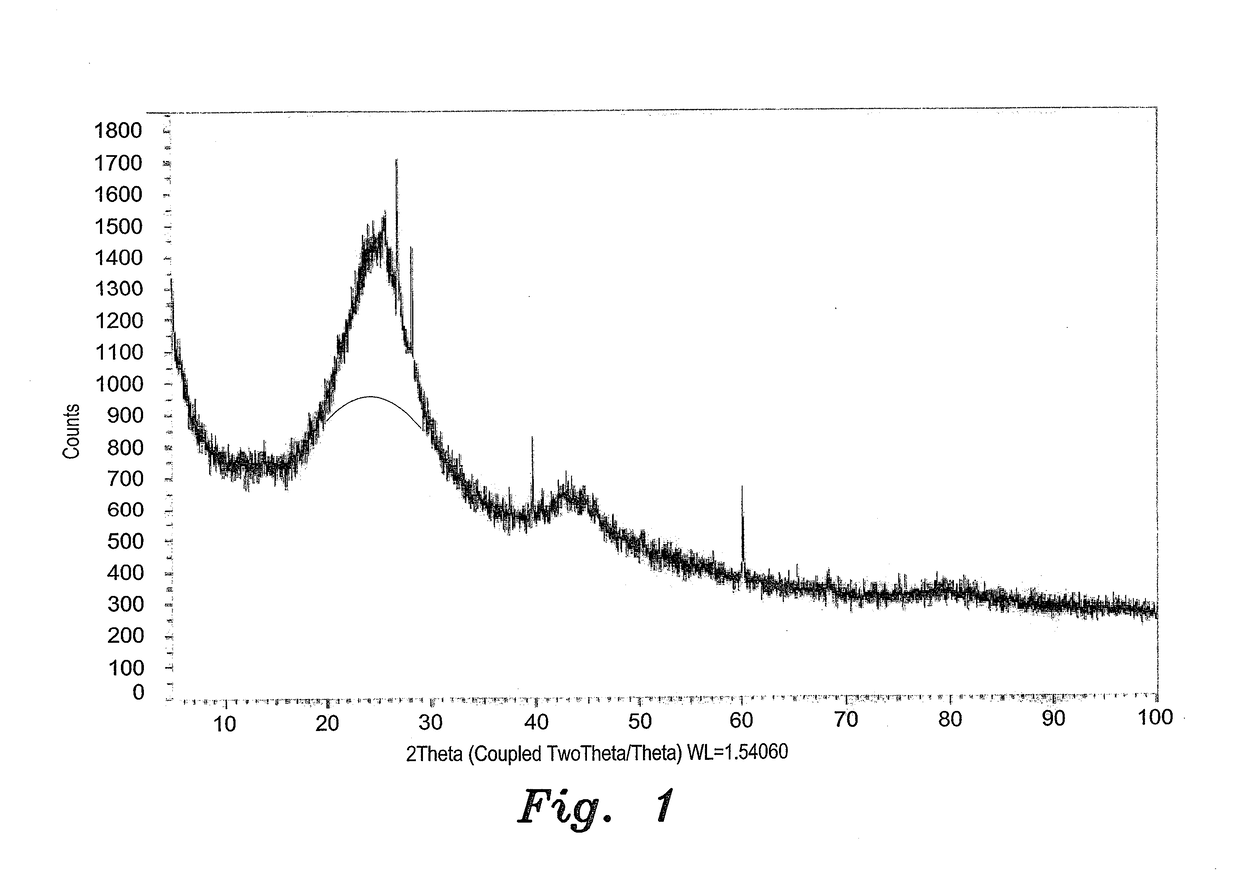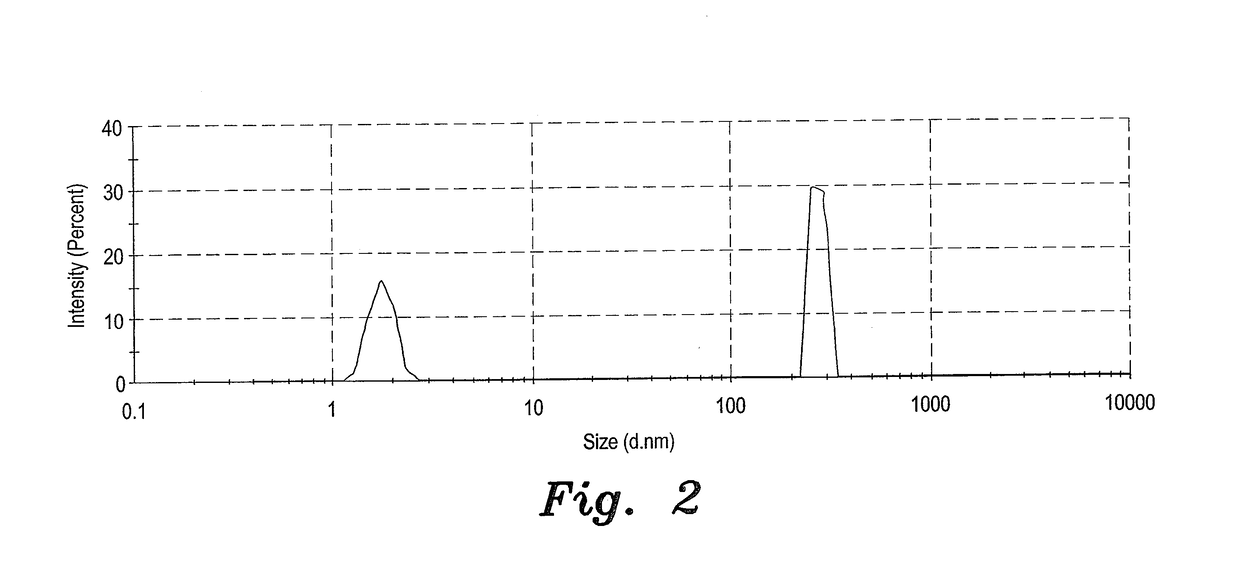Green synthesis of reduced graphene oxide using nigella sativa seed extract
a technology of nigella sativa and green synthesis, applied in the field of graphene oxide, can solve the problems of high cost of conventional chemical methods and the introduction of nanoparticles, and achieve the effect of inhibiting microbial activity and preventing cancer cell proliferation
- Summary
- Abstract
- Description
- Claims
- Application Information
AI Technical Summary
Benefits of technology
Problems solved by technology
Method used
Image
Examples
example 1
Preparation of Extract from Nigella Sativa seeds
[0026]Nigella sativa seeds were washed several times with distilled water. Then, about 30 grams of coarsely ground Nigella sativa seeds were taken and boiled in 150 mL of double distilled water for about 5 min. The extract was centrifuged and then filtered. The filtrate was collected and stored at 4° C. until further use.
example 2
Green Synthesis of Reduced Graphene Oxide (rGO) Nanoparticles
[0027]Soot was collected from girdle which formed during bakery of Abray, a local and traditional paste used as drinker in Ramadan month in Sudan. Graphene oxide (GO) was prepared according to the modified Hummer method. In detail, 1 g of soot was mixed with 50 mL H2SO4 and stirred for 5 min Next, 5 g of potassium permanganate, KMnO4, was very slowly added in an ice bath. The suspension was again stirred at 35° C. for 10 min. The temperature of the mixture was adjusted to a constant 60° C. for 15 min while the Nigella sativa seeds extract was added continuously so that the volume of the suspension was 150 mL, and 5 mL of H2O2 was added after 5 min The reaction product was centrifuged and washed with deionized water and 5% HCl solution repeatedly. Finally, the product was dried at 100° C.
[0028]The product was characterized by transmission electron microscopy (JEM-1011, JEOL, Japan). Also, scanning electron microscopy (SEM) ...
example 3
Antimicrobial Screening
[0029]Antimicrobial activity of the reduced graphene oxide (rGO) nanoparticles was determined using the agar well diffusion assay method as described by Holder and Boyce, 1994. Three bacterial strains (two gram positive and one gram negative) and one yeast strain, namely, Bacillis subtilis (RCMB 010067), Staphylococcus pneumoniae (RCMB 010011), Escherichia coli (RCMB 010052), and Aspergillus fumigatus (RCMB 02568) were used for the antimicrobial assay.
[0030]The tested organisms were sub-cultured on nutrient agar medium (Oxoid laboratories, UK) for bacteria and Sabouraud dextrose agar (Oxoid laboratories, UK) for fungi. Ampicillin and Gentamicin were used as positive control for gram positive and gram negative bacteria, respectively, while Amphotericin B was used for fungi. The plates were done in triplicates. Bacterial cultures were incubated at 37° C. for 24 h, while the fungal cultures were incubated at 25-30° C. for 3-7 days. Antimicrobial activity was dete...
PUM
| Property | Measurement | Unit |
|---|---|---|
| temperature | aaaaa | aaaaa |
| temperature | aaaaa | aaaaa |
| mean diameter | aaaaa | aaaaa |
Abstract
Description
Claims
Application Information
 Login to View More
Login to View More - R&D
- Intellectual Property
- Life Sciences
- Materials
- Tech Scout
- Unparalleled Data Quality
- Higher Quality Content
- 60% Fewer Hallucinations
Browse by: Latest US Patents, China's latest patents, Technical Efficacy Thesaurus, Application Domain, Technology Topic, Popular Technical Reports.
© 2025 PatSnap. All rights reserved.Legal|Privacy policy|Modern Slavery Act Transparency Statement|Sitemap|About US| Contact US: help@patsnap.com



